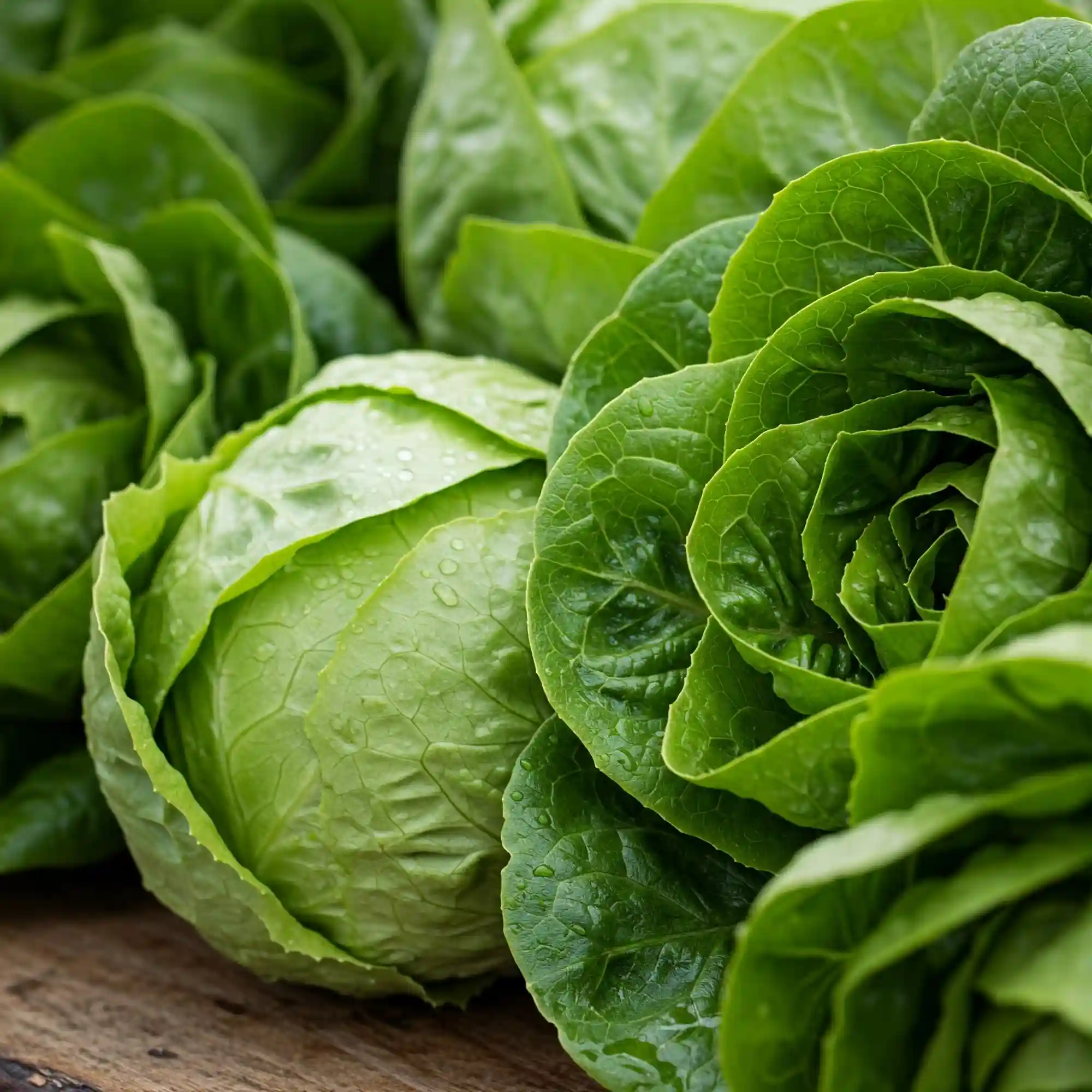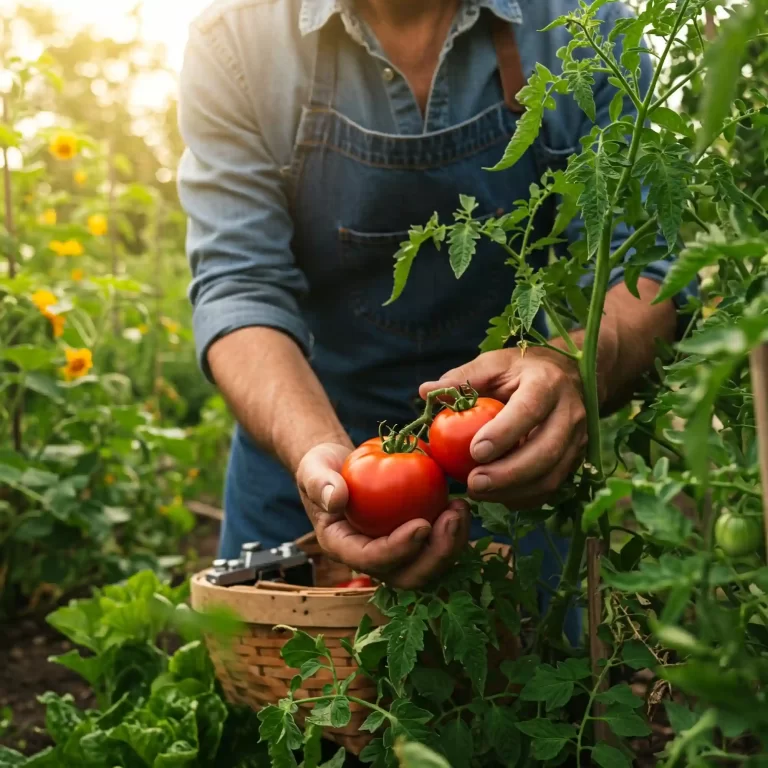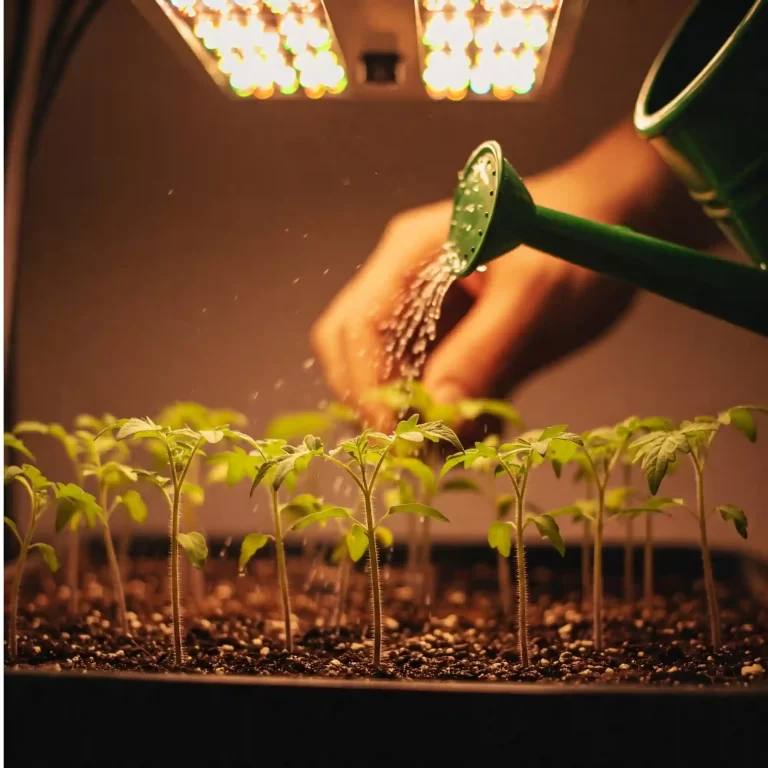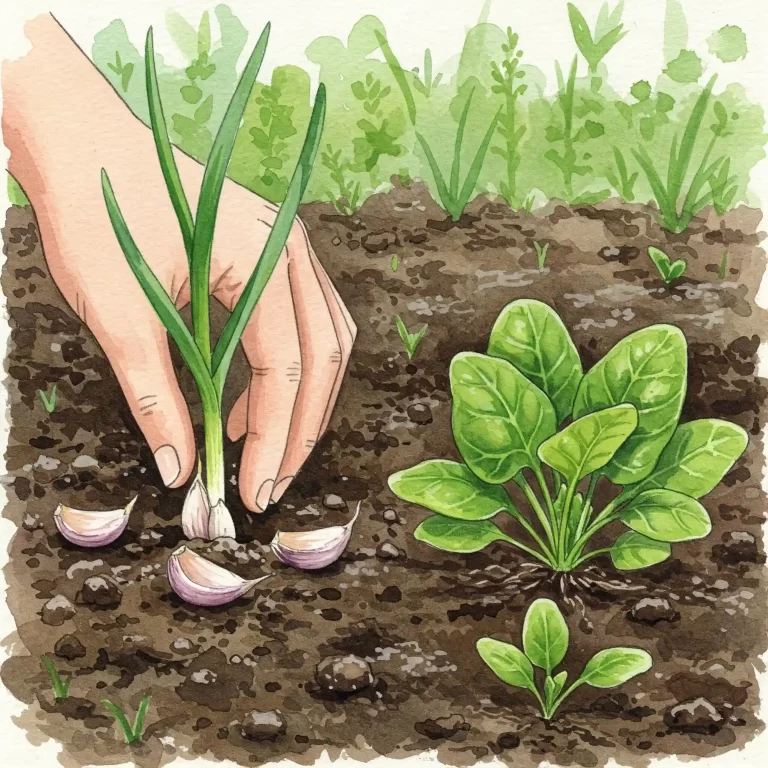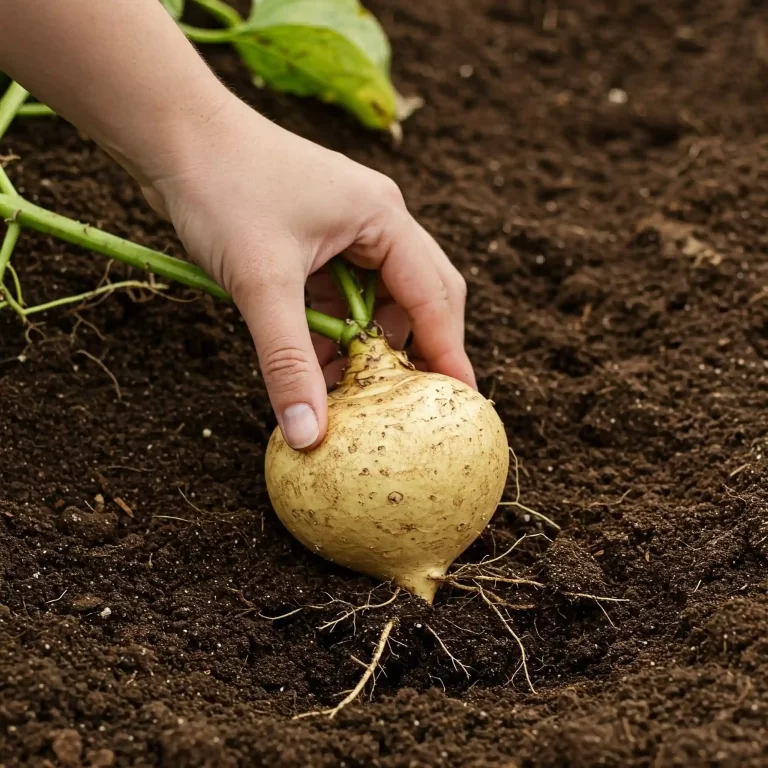Have you ever bitten into a store-bought salad and found it… lacking? The limp leaves, the slightly bitter taste, the feeling that it’s been sitting on a shelf for days? You’re not alone. Many of us crave the vibrant freshness of homegrown produce, especially when it comes to crisp, delicious lettuce.
It’s frustrating to spend money on produce that doesn’t live up to expectations. You envision yourself stepping out into your garden, plucking a few fresh leaves, and creating a vibrant, flavorful salad. But the reality of store-bought lettuce often falls short, leaving you wanting more. You might have even tried growing lettuce before, only to be met with disappointment – perhaps your plants bolted too quickly, were ravaged by pests, or simply didn’t thrive.
I’m here to tell you that growing your own lettuce is easier than you think. With a few simple steps and some helpful tips, you can enjoy an abundance of fresh, flavorful lettuce right from your backyard. In this guide, I’ll share my years of experience and provide you with a comprehensive, step-by-step approach to growing lettuce successfully. You’ll learn everything from choosing the right variety to harvesting and storing your bounty, ensuring you have fresh salads all season long. I’ve been gardening for years, and growing lettuce is one of the most rewarding vegetables I’ve cultivated. I’m excited to share my knowledge with you so you can experience the same joy.
How to grow lettuce vegetable is a common question. Growing lettuce, whether you’re a seasoned gardener or just starting, can be a highly rewarding experience. I remember my first attempt at growing lettuce; I made a few mistakes, but I learned so much in the process. I want to help you avoid those same pitfalls and get you harvesting delicious lettuce in no time. This guide is designed to empower you with the knowledge and confidence you need to grow thriving lettuce plants. We’ll cover everything from seed to salad, so you can enjoy fresh, homegrown greens whenever you desire. The process of growing lettuce from seed to harvest is quite fascinating.
We will delve into various methods, including how to grow lettuce from seed, how to grow lettuce in containers, and even how to grow lettuce indoors. We will also address common challenges such as pest control, disease prevention, and how to prevent lettuce from bolting. My goal is to equip you with the knowledge to enjoy homegrown salads throughout the entire growing season. You will be amazed at the difference in taste between store-bought lettuce and the lettuce you grow yourself.
Growing lettuce successfully involves several key factors: choosing the right variety for your climate, preparing the soil properly, providing adequate sunlight and water, and protecting your plants from pests and diseases. This guide will cover each of these aspects in detail, giving you the tools you need to succeed.
I believe everyone should have the opportunity to experience the joy of growing their own food. By following the tips and techniques in this guide, you can transform your garden into a productive lettuce patch and enjoy the delicious rewards of your labor. You will be able to provide yourself and your family with fresh, healthy greens, all while connecting with nature and enjoying the therapeutic benefits of gardening.
1. Choosing the Right Lettuce Variety
Choosing the right lettuce variety is the first step toward a successful lettuce harvest. Just like us, lettuce comes in many different shapes, sizes, and with varying preferences for climate and growing conditions. Understanding these differences will help you select the perfect lettuce for your garden. I’ve found that experimenting with different varieties is one of the most enjoyable aspects of growing lettuce. You might discover a new favorite!
There are four main types of lettuce, each with unique characteristics:
- Romaine: This type of lettuce forms upright heads with elongated, sturdy leaves. It’s known for its crisp texture and robust flavor, making it a popular choice for salads and Caesar salads in particular. Romaine lettuce is also relatively heat-tolerant, making it a good option for warmer climates.
- Butterhead: As the name suggests, butterhead lettuce has soft, tender leaves with a buttery texture. It forms loose heads and has a mild, sweet flavor. Butterhead varieties are more sensitive to heat than romaine and prefer cooler growing conditions.
- Loose Leaf: This type of lettuce doesn’t form a head; instead, it grows in a loose rosette of leaves. Loose leaf lettuce is easy to grow and harvest, as you can simply pick individual leaves as needed. It comes in a variety of colors and textures, adding visual appeal to your garden and your salads.
- Crisphead (Iceberg): This is the classic lettuce you find in grocery stores. It forms tight, dense heads with crisp, watery leaves. Iceberg lettuce is known for its long storage life but has a relatively mild flavor compared to other varieties.
When choosing a lettuce variety, consider the following factors:
- Climate: Some lettuce varieties are more heat-tolerant than others. If you live in a warm climate, choose varieties that are known to resist bolting (premature flowering caused by heat). If you have cooler summers, you have a wider range of options.
- Space: If you’re growing lettuce in containers or have limited garden space, consider smaller varieties or loose leaf types that can be harvested continuously.
- Personal Preference: Ultimately, the best lettuce variety is the one you enjoy eating the most. Consider the flavor, texture, and appearance of different varieties when making your selection.
Here’s a quick reference table to help you compare the different lettuce types:
| Lettuce Type | Characteristics | Best For |
| Romaine | Upright heads, crisp texture, robust flavor, heat tolerant | Salads, Caesar salads, warmer climates |
| Butterhead | Soft, tender leaves, buttery texture, mild flavor, prefers cooler conditions | Salads, sandwiches, cooler climates |
| Loose Leaf | Loose rosette of leaves, easy to grow and harvest, variety of colors and textures | Continuous harvesting, small spaces, adding visual interest to salads |
| Crisphead (Iceberg) | Tight, dense heads, crisp, watery leaves, long storage life, mild flavor | Wedges, salads, long-term storage |
I’ve found that starting with a few different varieties is a great way to discover what grows best in your garden and what flavors you enjoy the most. Don’t be afraid to experiment!
2. Starting Lettuce Seeds: Indoors or Outdoors?
Now that you’ve chosen your lettuce variety, it’s time to start thinking about how you’ll get those little seeds growing. You have two main options: starting seeds indoors or direct sowing them into your garden bed. Each method has its own advantages and disadvantages, and the best choice for you will depend on your climate, your available space, and your personal preferences.
Starting Seeds Indoors:
Starting lettuce seeds indoors gives you a head start on the growing season, especially if you live in an area with a short growing season or harsh winters. It also allows you to control the growing environment more closely, providing optimal conditions for germination and early growth.
Here are some tips for starting lettuce seeds indoors:
- Use a seed-starting mix: This type of soil is specifically formulated for seedlings, providing the right balance of drainage and moisture retention.
- Sow seeds in shallow trays or containers: Lettuce seeds are small and don’t need to be planted deeply.
- Keep the soil moist but not soggy: Overwatering can lead to damping-off disease, which can kill young seedlings.
- Provide plenty of light: Place the seedlings under grow lights or in a sunny window.
- Harden off seedlings before transplanting: This process acclimates the seedlings to outdoor conditions, making them less likely to experience transplant shock.
Direct Sowing Seeds:
Direct sowing lettuce seeds into your garden bed is a simpler method, but it’s best suited for areas with mild climates and longer growing seasons. It’s also a good option if you don’t have the space or equipment to start seeds indoors.
Here are some tips for direct sowing lettuce seeds:
- Prepare the soil: Make sure the soil is loose, fertile, and well-draining.
- Sow seeds thinly: Lettuce seeds are small, so it’s easy to overcrowd them.
- Keep the soil moist: Water the seeds regularly, especially during dry periods.
- Thin seedlings as needed: Once the seedlings have a few sets of true leaves, thin them to the strongest plants.
Here’s a quick comparison table to help you decide which method is right for you:
| Starting Method | Advantages | Disadvantages |
| Starting Seeds Indoors | Gives you a head start on the growing season, allows you to control the growing environment | Requires more space and equipment, seedlings need to be hardened off before transplanting |
| Direct Sowing Seeds | Simpler method, no need for transplanting | Best suited for mild climates with longer growing seasons, seedlings are more vulnerable to pests and diseases |
I’ve found that starting seeds indoors gives me the best results, especially for early spring plantings. It allows me to get a jump start on the season and ensures that I have healthy, vigorous seedlings ready to go into the garden as soon as the weather warms up. However, if you live in a mild climate with a long growing season, direct sowing can be a simpler and more convenient option.
3. Preparing the Garden Bed for Planting Lettuce
Now that you’ve decided how you’ll start your seeds, it’s time to get your garden bed ready for planting. Just like a good foundation is essential for a sturdy house, proper soil preparation is crucial for a thriving lettuce patch. I’ve learned over the years that taking the time to prepare the soil properly pays off in the long run with healthier, more productive plants.
Lettuce prefers loose, fertile, and well-draining soil. This means that the soil should be able to retain enough moisture to keep the plants hydrated, but it should also drain well enough to prevent waterlogging, which can lead to root rot.
Here are some tips for preparing your garden bed for lettuce:
- Test your soil: A soil test can tell you the pH of your soil and whether it’s lacking any essential nutrients. Lettuce prefers a soil pH between 6.0 and 7.0.
- Amend the soil with compost: Compost is a great way to improve soil fertility and drainage. It also helps to retain moisture and suppress weeds.
- Add other organic matter: Other organic matter, such as aged manure or leaf mold, can also improve soil health.
- Till or loosen the soil: This will help to improve drainage and aeration.
- Create raised beds: Raised beds are a great option for growing lettuce, especially in areas with heavy clay soil. They improve drainage and warm up more quickly in the spring.
Here’s a quick guide to soil amendments:
| Amendment | Benefits | How to Use |
| Compost | Improves soil fertility, drainage, and moisture retention; suppresses weeds | Mix into the soil before planting; use as a side dressing during the growing season |
| Aged Manure | Improves soil fertility and structure; provides essential nutrients | Mix into the soil before planting; use aged manure to avoid burning plants |
| Leaf Mold | Improves soil drainage and moisture retention; provides beneficial microorganisms | Mix into the soil before planting; use as a mulch |
I’ve found that adding a combination of compost and aged manure to my garden beds provides the best results for growing lettuce. It creates a rich, fertile environment that helps my plants thrive. Remember, healthy soil equals healthy plants!
4. Planting and Transplanting Lettuce Seedlings
Once your garden bed is prepared and your seedlings are ready (or if you’re direct sowing), it’s time to get those lettuce plants in the ground! This is where all your hard work starts to pay off. I always find this stage particularly exciting – it’s when you really start to see your garden come to life.
Transplanting Seedlings:
If you started your seeds indoors, you’ll need to transplant them into your garden bed. Here’s how:
- Harden off your seedlings: This is a crucial step! Gradually acclimate your seedlings to outdoor conditions by exposing them to increasing amounts of sunlight and wind over a period of about a week.
- Choose a cloudy day or late afternoon for transplanting: This will help to reduce transplant shock.
- Dig holes slightly larger than the seedling’s root ball: Space the holes according to the mature size of the lettuce variety you’re growing.
- Gently remove the seedlings from their containers: Be careful not to damage the roots.
- Place the seedlings in the holes and fill with soil: Gently firm the soil around the base of the seedlings.
- Water thoroughly: This will help to settle the soil and reduce transplant shock.
Direct Sowing:
If you’re direct sowing your lettuce seeds, here’s what you need to do:
- Prepare the soil: Make sure the soil is loose, fertile, and well-draining.
- Create shallow furrows or rows: These will help you to sow the seeds evenly.
- Sow seeds thinly: Lettuce seeds are small, so it’s easy to overcrowd them.
- Cover the seeds with a thin layer of soil: Gently firm the soil.
- Water thoroughly: Keep the soil moist until the seeds germinate.
Spacing:
Proper spacing is essential for healthy lettuce growth. If the plants are too crowded, they’ll compete for resources and be more susceptible to diseases. Here’s a general guideline for spacing lettuce plants:
- Loose leaf lettuce: 4-6 inches apart
- Butterhead and Romaine lettuce: 8-10 inches apart
- Crisphead lettuce: 12-16 inches apart
I’ve found that using a spacing template or a ruler can be helpful to ensure even spacing.
Here’s a quick tip: If you’re not sure how much space to give your lettuce plants, check the seed packet or plant tag. It will usually provide specific spacing recommendations.
5. Caring for Your Growing Lettuce Plants
Now that your lettuce is planted, the real work begins – caring for your growing plants. This involves providing the right amount of water, sunlight, and nutrients, as well as protecting your lettuce from pests and diseases. I’ve found that consistent care is key to a successful lettuce harvest. A little attention each day can make a big difference.
Watering:
Lettuce needs consistent moisture to thrive. Aim to water your lettuce plants deeply and regularly, especially during dry periods. Here are some watering tips:
- Water at the base of the plants: This will help to prevent fungal diseases.
- Water early in the morning: This will give the leaves time to dry before nightfall.
- Avoid overwatering: Soggy soil can lead to root rot.
- Use a soaker hose or drip irrigation: These methods deliver water directly to the roots, reducing water waste and preventing fungal diseases.
Sunlight:
Lettuce prefers full sun, which means at least 6 hours of direct sunlight per day. However, in hot climates, lettuce can benefit from some afternoon shade. Here are some tips for providing the right amount of sunlight:
- Plant lettuce in a sunny location: Choose a spot in your garden that receives at least 6 hours of direct sunlight per day.
- Provide shade during hot weather: Use shade cloth or plant taller plants nearby to provide afternoon shade.
Weeding:
Weeds compete with lettuce for water, nutrients, and sunlight. It’s important to remove weeds regularly to ensure that your lettuce plants thrive. Here are some weeding tips:
- Weed by hand: This is the most effective way to remove weeds without damaging your lettuce plants.
- Use a hoe: A hoe can be used to remove larger weeds.
- Mulch around your lettuce plants: This will help to suppress weeds and retain moisture.
Fertilizing:
Lettuce benefits from regular fertilization. Here are some tips for fertilizing your lettuce plants:
- Use a balanced fertilizer: A balanced fertilizer contains equal amounts of nitrogen, phosphorus, and potassium.
- Fertilize every 2-3 weeks: This will provide your lettuce plants with the nutrients they need to grow.
- Use organic fertilizers: Compost tea and fish emulsion are great organic options.
Here’s a quick guide to common lettuce problems and their solutions:
| Problem | Solution |
| Wilting | Water deeply and regularly. |
| Yellowing leaves | Fertilize with a balanced fertilizer. |
| Bolting | Plant bolt-resistant varieties. Provide shade during hot weather. |
I’ve found that consistent care is the key to growing healthy lettuce plants. By providing the right amount of water, sunlight, and nutrients, and by protecting your lettuce from pests and diseases, you can enjoy a bountiful harvest.
6. Protecting Lettuce from Pests and Diseases
Growing delicious lettuce also means protecting it from unwanted guests – pests and diseases. I’ve learned that a proactive approach is the best defense. Regular inspection and preventative measures can save you a lot of trouble down the road.
Common Lettuce Pests:
Lettuce, unfortunately, is a tasty treat for various garden pests. Here are some of the most common culprits:
- Aphids: These tiny insects suck plant sap, causing leaves to curl and distort.
- Slugs and Snails: These slimy creatures chew holes in leaves, leaving unsightly damage.
- Cutworms: These caterpillars feed on young seedlings, often cutting them off at the base.
- Leaf Miners: These insects tunnel within the leaves, creating visible trails.
Organic Pest Control Methods:
I prefer to use organic methods to control pests in my garden. Here are some effective options:
- Handpicking: This is a simple but effective way to remove larger pests like slugs and snails.
- Insecticidal Soap: This spray can be used to control aphids and other soft-bodied insects.
- Neem Oil: This natural oil can be used to control a variety of pests, including aphids, leaf miners, and cutworms.
- Companion Planting: Planting certain herbs and flowers alongside your lettuce can help to repel pests. For example, marigolds repel nematodes, and garlic repels aphids.
Common Lettuce Diseases:
Lettuce can also be susceptible to several diseases, including:
- Downy Mildew: This fungal disease causes yellow spots on the upper surface of leaves and a white, downy growth on the underside.
- Botrytis (Gray Mold): This fungal disease causes gray, fuzzy mold to grow on leaves and stems.
Disease Prevention:
Prevention is the best way to control lettuce diseases. Here are some helpful tips:
- Provide good air circulation: Space your plants properly to allow for good air flow.
- Avoid overhead watering: Water at the base of the plants to prevent fungal diseases.
- Remove infected leaves: This will help to prevent the disease from spreading.
Here’s a quick guide to common lettuce pests and diseases and their organic solutions:
| Problem | Organic Solution |
| Aphids | Insecticidal soap, neem oil, handpicking, companion planting with marigolds |
| Slugs and Snails | Handpicking, beer traps, copper tape |
| Cutworms | Handpicking, cutworm collars |
| Leaf Miners | Neem oil, row covers |
| Downy Mildew | Improve air circulation, avoid overhead watering, remove infected leaves |
| Botrytis (Gray Mold) | Improve air circulation, avoid overhead watering, remove infected leaves |
By taking a proactive approach to pest and disease control, you can keep your lettuce plants healthy and productive. Regular inspection and preventative measures are key to a successful harvest.
7. Harvesting and Storing Your Fresh Lettuce
After all your care and attention, it’s finally time to reap the rewards of your labor! Harvesting your own lettuce is incredibly satisfying, and the taste of fresh-from-the-garden greens is simply unbeatable. I still remember the excitement of harvesting my first head of lettuce – it was a moment of pure gardening joy.
When to Harvest:
The timing of your harvest will depend on the type of lettuce you’re growing:
- Loose leaf lettuce: You can begin harvesting individual leaves as soon as they are large enough to eat.
- Butterhead and Romaine lettuce: Harvest when the heads are firm and well-formed.
- Crisphead lettuce: Harvest when the heads are firm and dense.
How to Harvest:
There are two main ways to harvest lettuce:
- Cutting individual leaves: This method is best for loose leaf lettuce. Simply cut the outer leaves with a sharp knife, leaving the inner leaves to continue growing.
- Harvesting the whole head: This method is best for butterhead, romaine, and crisphead lettuce. Cut the head at the base with a sharp knife.
Storing Lettuce:
Proper storage is essential to keep your lettuce fresh and crisp. Here are some tips:
- Wash and dry the lettuce: Remove any dirt or debris and dry the leaves thoroughly.
- Store in a plastic bag or container: Place the lettuce in a plastic bag or container lined with a paper towel.
- Store in the refrigerator: Lettuce will stay fresh for up to a week in the refrigerator.
Cut-and-Come-Again Harvesting:
This method is particularly useful for loose leaf lettuce. By harvesting only the outer leaves, you can encourage the plant to continue producing new leaves, providing you with a continuous supply of fresh greens throughout the growing season.
Here’s a quick tip: To keep your lettuce fresh for longer, avoid storing it near fruits that produce ethylene gas, such as apples and bananas.
By following these harvesting and storage tips, you can enjoy your homegrown lettuce for as long as possible. There’s nothing quite like a fresh salad made with lettuce you’ve grown yourself!
FAQ: Your Burning Lettuce Growing Questions Answered
Throughout my years of gardening, I’ve encountered many common questions about growing lettuce. I’ve compiled some of the most frequently asked questions to help you navigate your lettuce-growing journey. You might have some of these questions yourself!
How to grow lettuce in raised garden beds?
Raised garden beds offer several advantages for growing lettuce. They improve drainage, warm up more quickly in the spring, and make it easier to control weeds. To grow lettuce in raised beds, fill the bed with a well-draining soil mix amended with compost. Plant your lettuce seedlings or seeds according to the spacing recommendations for the variety you’re growing.
How to grow lettuce from seed in containers?
Growing lettuce in containers is a great option for those with limited space. Choose a container that is at least 6 inches deep and has drainage holes. Fill the container with a high-quality potting mix and sow your lettuce seeds according to the instructions on the seed packet. Place the container in a sunny location and water regularly.
How to grow lettuce indoors under grow lights?
Growing lettuce indoors under grow lights allows you to enjoy fresh lettuce year-round. Use grow lights that provide a full spectrum of light and position them about 6 inches above the seedlings. Keep the lights on for 14-16 hours per day.
How to grow lettuce in hot weather without bolting?
Bolting, or premature flowering, is a common problem when growing lettuce in hot weather. To prevent bolting, choose bolt-resistant varieties, provide shade during the hottest part of the day, and water regularly.
How to grow lettuce organically and prevent common pests?
Growing lettuce organically involves using natural methods to fertilize and protect your plants. Amend the soil with compost and use organic fertilizers such as compost tea or fish emulsion. To prevent pests, use organic pest control methods such as handpicking, insecticidal soap, or neem oil.
How to grow crisp and sweet lettuce in summer?
To grow crisp and sweet lettuce in summer, choose heat-tolerant varieties and provide shade during the hottest part of the day. Water deeply and regularly, and harvest your lettuce in the morning when it’s cool.
